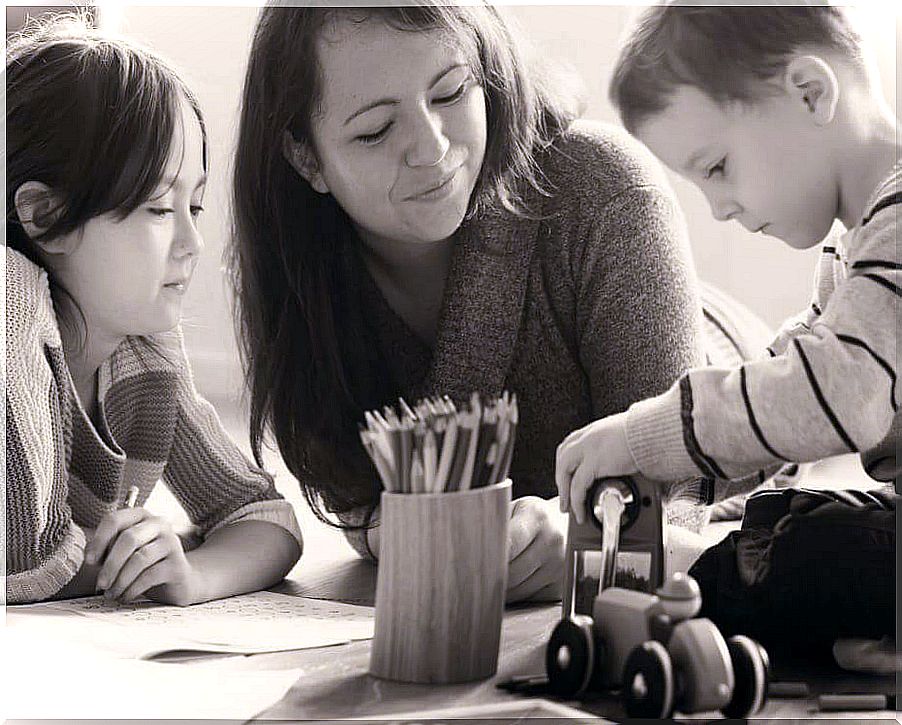3 Simple Tricks For Children To Listen To You

During childhood the prefrontal cortex is developing, making impulse control a difficult task for children. So is the control of tension, which is directed more by external stimuli than by one’s own consciousness. In this way, it is normal that when we speak to them they tend to be distracted and dispersed.
Well, in the absence of the magic recipe for your prefrontal cortex to develop before the end of adolescence, what we do have at our disposal are some simple tricks. With them we are going to get them to support us, we are going to make sure that they understand us and seek their commitment so that they put into practice what we send them.
We go with them!
Claim your attention and keep it
The ease of distraction will be our worst enemy for communication with the little ones. But how can we beat it? Well, first of all, remove all stimuli that you can distract yourself with from your sensory field. Obviously it will be very difficult for us to remove them all: we are not going to remove all the drawings from the wall of his room, or to take all the stuffed animals out into the hall, or to remove the color from the furniture or the walls when we want to talk to him. So what can we do?
Therefore, if we have the possibility, it is good that in our house there is a space that is as free as possible from this type of attractive stimulation. In this way we will force it to focus on us. This will be useful both when we want to correct you and when we want to acknowledge or give an order. In all cases, what we want is for the message to settle.

Regarding care, the most important sense is sight and therefore the one that we have to ensure the most. We have to make sure that the little one looks at us: children, like adults, usually pay attention to the place where they look. We can place their face or request their look “Please Juan, look at me.”
Talking “short” helps children
If your attention is not yet developed, your memory is not. When we give you an order, it is best to keep it as short and precise as possible. In that order it has to go:
- What it has to do?
- How and where do you have to do it? Recommended if it is the first time he does it or you understand that he can do it in another way, otherwise the child may think that we do not trust him.
- When do you have to do it? At a younger age, it is recommended that the orders or mandates be as immediate in time. If you want him to do something when the movie is over, wait for him to finish and tell him. Do not do it before because it is likely that he will forget. Later you will not know if it is a mistake or has disobeyed you for other reasons: in one case or another you will have to repeat the order.
Another aspect relating to time. If you’ve sent him something for when he’s done playing, don’t repeat it every five minutes. Let the game fulfill its recreational function and do not encourage the habit of thinking about something other than what it does. If there is one good thing that children have, it is their ability to focus on the present and to flow. Let him enjoy it to the fullest!
Another trick is to give orders one by one, correct aspect by aspect and also reward molecularly. “I like that you do this because…”, “I didn’t like that you did this because…”. If he has made a drawing in which he “has not gone out of line” and has also chosen the colors very well, reward him for one of the aspects and wait for him to repeat the other to reward him again. The same to correct: children do many things that can be greatly improved, but this improvement has to occur gradually and based on small goals.

Choose the best time
If we are going to correct or punish a child, it is best to do it as soon as possible, so that between what he has done wrong and the consequences, you gave the shortest possible time. He thinks that for children the day is very long: for them at night, what happened in the morning is very far away.
We also advise you that when you are going to convey important information to him, you evaluate the child’s condition. A calm child is not the same as an excited child because he knows that it is time for something he loves, like going to the park. Nor is a child just woken up and brimming with energy the same as a tired child at the end of the day.
Neither is a child with relaxed arms the same as a child with crossed arms defensively. Thus, before communicating with him, in some cases it would be good if we leave him some intact so that he can relax and open up within the communicative situation itself.
Therefore, hoping that you liked this, we leave you a great article so you can learn how to relax your children. Through games!
It may be small, but let’s not forget that it acts as it does for a reason and if we do not know it it is good to know it so that our interventions are even better. He thinks that if we keep the communication channel open and ask questions, it will be easier for him to tell us and that, therefore, the measures we adopt are more adapted to his needs.
In one way or another we encourage you to communicate with your children. They are smart and they make it very complicated at times, but remember that educating is a beautiful responsibility that is very worthwhile.









